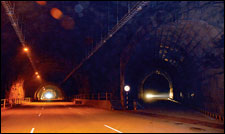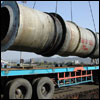 Several projects dependent on heavy machinery and equipment including those of metro rail are getting affected due to implementation of the guidelines laid down by the Ministry of Road Transport and Highways for safe movement of over-dimensional and over-weight cargo on national highways.
Several projects dependent on heavy machinery and equipment including those of metro rail are getting affected due to implementation of the guidelines laid down by the Ministry of Road Transport and Highways for safe movement of over-dimensional and over-weight cargo on national highways.
In January this year, the MoRTH circulated guidelines for movement of ODC and OWC with the objective of safeguarding structural assets such as bridges on national highways. As per the guidelines, transporters moving ODC and OWC on national highways need to seek prior permission from the MoRTH after submitting condition survey of bridges en route through empanelled consultants. The load is also required to be maintained within the permissible limit.
Representatives from the Hydraulic Trailers Owners Association, BEML Ltd., Delhi Metro Rail Corporation Ltd. as well as the Ministry of Heavy Industries pointed out during recent meetings with the Road Transport and Highways Secretary that the requirement with regard to condition survey of bridges under the guidelines had brought movement of metro rail coaches and other heavy equipment, which can be carried on multi axle modular hydraulic trailers of combination types HT1, HT2 and HT3 without causing any damage to structural assets on national highways, to a standstill.
In an attempt to address the issue raised by the various stakeholders concerning condition survey of bridges, the MoRTH has now decided that movement of consignment up to 100 ton Gross Vehicle Weight (total weight of consignment plus unladen weight of hydraulic trailer including puller) distributed uniformly on hydraulic trailer types would be allowed on bridges having span length of 50 m or less en route, except on those with signs of distress, by the respective national highway authority. The National Highways Authority of India /Public Works Department (NH Division)/Border Roads Organisation en route would allow the movement only after MoRTH grants permission for movement of the ODC/OWC and provided the stipulated precautions are taken. In such cases, the entire cost of any damage suffered by the bridge as a result of the movement of the ODC/OWC has to be borne by the consignor/transporter. No movement would be allowed on bridges having span length of more than 50 m without condition survey and analysis by consultants empanelled with the MoRTH.
A circular issued by the MoRTH on September 20th, 2013, regarding movement of ODC/OWC on national highways using hydraulic trailer types HT1 to HT3 said that for GVW of more than 100 ton, the earlier guideline circulated in January would apply.
It is estimated that around 200 ODCs and OWCs move on national highways every month.











